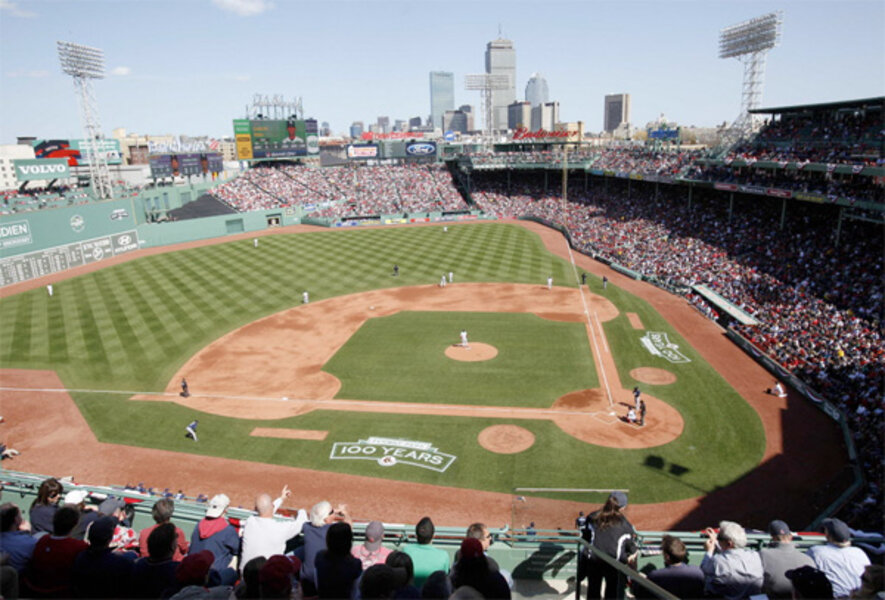This book, as the saying goes, hits the ball out of the park. It has it all: compelling history and substantial sidebars, extensive timelines of each of Fenway’s decades, and the best photo collection imaginable. Plus there’s a poster-size blueprint of the park and a four-page graphic foldout about the Green Monster. (Did you know that the initials of former team owner Tom Yawkey and his wife appear in Morse code on the manual scoreboard?)
A major reason that this book stands apart is that it’s able to draw from the deep journalistic resources of Boston’s premier daily newspaper, The Boston Globe. The Globe has one of the best sports sections in the country, and it shows in this history coauthored and edited by John Powers, a longtime Globe sportswriter, and Ron Driscoll, a former Globe copy editor.
Many of the images in this book are not found elsewhere and the sidebars are a particular strength. The latter touch on a wide array of topics, from efforts to determine the actual distance of the left field wall from home plate, a topic that seems intentionally shrouded in mystery (310 feet is the currently accepted distance), to the two nighttime power outages at the ballpark. During the first of the blackouts in 1981 public address announcer Sherm Feller led the crowd in an a cappella rendition of the national anthem and used a bullhorn to read out the starting lineups.
Then there are the sidebar profiles of people whose lives are integral to the Fenway story. Take, for example, Arthur D’Angelo. His family emigrated to Boston from Italy to flee Mussolini’s dictatorship in 1938. D’Angelo and his twin brother spoke no English and knew nothing about baseball upon arriving in the US at age 14, but by 1946 they were hawking pennants outside Fenway Park, a business that eventually led to opening one of the largest souvenir stories in the country across the street. Today D’Angelo says the business sells more caps than anybody in the world. And, of course, he became an avid baseball fan.
Women are also part of Fenway’s lore. Lib Dooley began attending Red Sox games during World War II and eventually witnessed 4,000 consecutive games from her seat near the team’s on-deck circle. No less an authority that Ted Williams called her “the greatest Red Sox fan there’ll ever be."
Another legendary figure, though a less visible one, is Helen Robinson, who worked the team’s phone switchboard for 60 years. Here, too, she had the respect of Williams, who admired her ability to keep all personal calls confidential and maintain a cheerful disposition. He called her “Sunshine.”
What some may have forgotten about Fenway’s modern history is that in 1999 the owners of the Red Sox had a plan to build a brand new Fenway Park approximately where the old ballpark sits. To appease opponents, the owners were going to pay homage to the storied stadium structure by keeping certain pieces as memorials, including part of the Green Monster, the 1912 brick entrance, and the infield. Such olive branches weren’t enough, and when the new owners took over in 2002, they undertook a 10-year project to improve and enlarge Fenway.
The result, of course, has led to this year’s Fenway Park centennial and surely the largest publishing love-in any American sports stadium has ever experienced.








